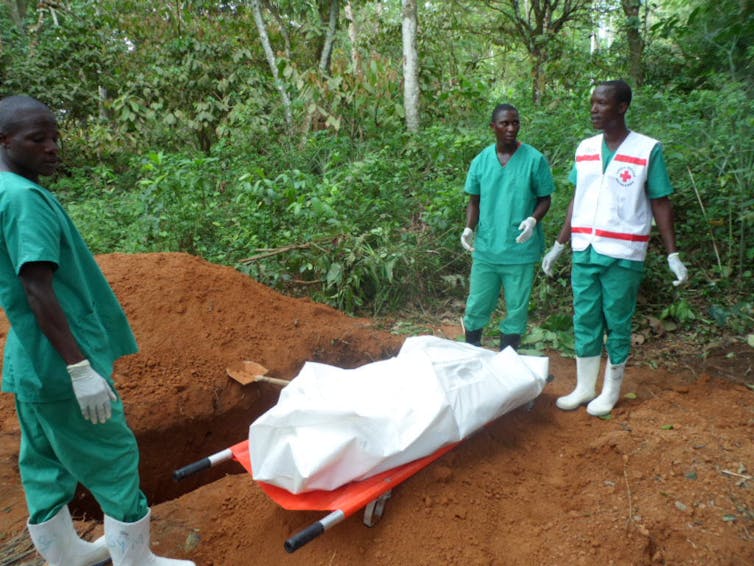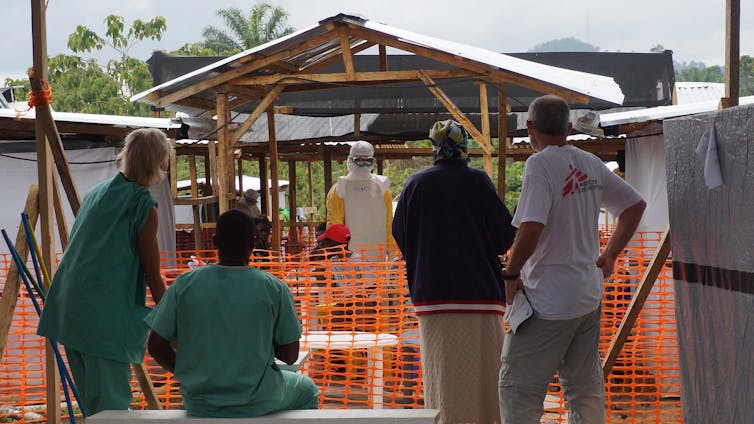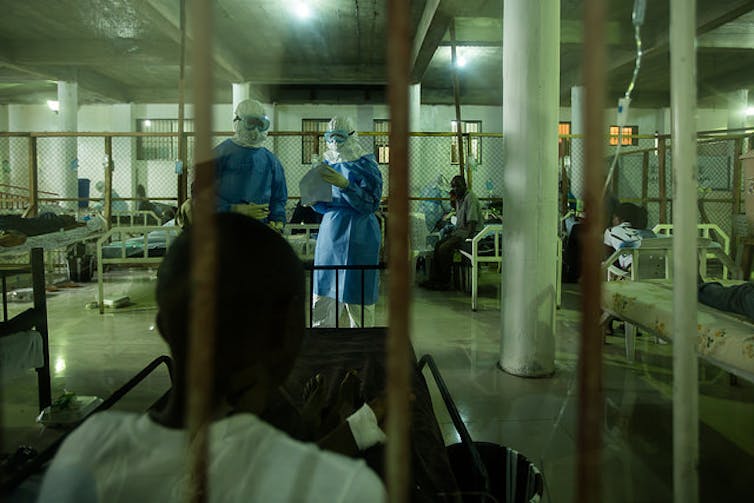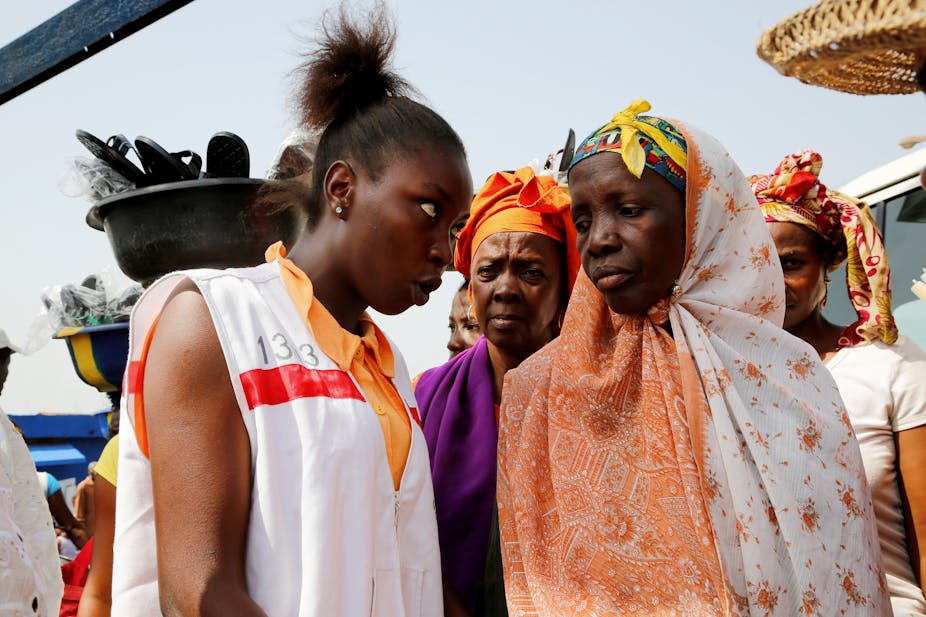Too slow. Too little, too late. Unprecedented. Out of control. These are just some of the descriptors for the biggest recorded epidemic of human infection by an ebolavirus.
The question by some is how this happened? As of this writing, 5,347 people are suspected or known to be infected (an undoubted underestimate) in Guinea, Sierra Leone, Liberia, Nigeria and Senegal. And 2,630 have died.
The previously stated death rate of 49% is also a serious underestimate. The World Health Organization has calculated the fatality rate among confirmed cases with known outcomes to be above 70% overall and 64% for those who were hospitalised.
Latest worst-case modelling predicts up to 1.4 million people might become infected in this outbreak; 70% of which is 980,000 souls.
How did it happen?
The outbreak was identified six months ago, three months after it is believed to have begun from a single animal-to-human transfer.
The world was soon after assured by those in senior roles that Ebola virus disease outbreaks were not hard to control and ebolaviruses were not easy to catch. This was meant to apply even to members of the Zaire ebolavirus species (an Ebola virus), one of which now ravages West Africa.
(Note, Ebola virus is the name of the Zaire species, while ebolavirus refers to all species).
Were assurances just hubris or simply a failure to recognise this outbreak for what it was?
Every infectious disease outbreak has a “personality”; this one includes the introduction of a terrifying disease into a completely susceptible population, in a part of the world with no chance of stopping it alone.
West Africa has very few health-care workers, poor roads and sizable distances between villages, towns and cities. These factors in combination with traditions, especially those for preparing loved ones for burial, have conspired to produce a perfect storm of opportunity for Ebola virus transmission and spread.

We often hear that ebolaviruses were not known to exist in Western Africa prior to this outbreak. But that is not strictly correct. Two scientific studies published in 1986, using samples collected in 1973 and 1981-2, had already reported finding haemorrhagic fever viruses, including Ebola virus, in the forests of Liberia.
Another study, co-authored by Dr Sheik Umar Khan who subsequently succumbed to an Ebola virus infection in Sierra Leone, was published after the outbreak began. It found signs of Ebola virus in samples collected from 2006 to 2008.
With 20:20 hindsight, one can speculate that this information could have been used by local governments to educate their citizens and better train and prepare their front-line health-care workers; a higher proportion of whom have, throughout history, been infected during Ebola virus outbreaks.
Experts repeatedly tell us this virus can be easily contained with early intervention. Had this population been prepared, perhaps more personal protective equipment and bleach would have been ready to go, and the rapid transmission of the West African Ebola virus outbreak might have been contained.
No airborne transmission
Transmission of ebolaviruses between humans is by direct contact in which the broken skin or exposed mucous membrane (mouth, eyelids, genital tract) of susceptible humans is exposed to an infectious dose of Ebola virus-laden fluid (blood, vomit, faeces, sweat, saliva and semen) from a patient showing signs of the disease.
Semen can remain infectious weeks into the convalescence period. Propelling wet droplets onto a mucous membrane is also a form of direct contact.
But regardless of what one might read in The Hot Zone (or the New York Times), there is no direct evidence that any ebolavirus species, strain or variant is transmitted via an airborne route.

The scientific evidence suggests that while aerosols can be used in the lab, it is the wet droplets in these rather than the dried down airborne fraction that are most likely involved in ferrying virus. Even the researchers involved in the events of the dramatised book version caution us to keep in mind that “aerosol and droplet transmission” is not the same as “airborne transmission.”
This does not sit well with some who see ebolavirus lab workers in lab containment “space-suits” and erroneously compare that to the personal protective equipment worn by diagnostic scientists, Médecins Sans Frontières workers, doctors, nurses and gravediggers, and draw the conclusion that more is always better.
What’s missing from their concern that only an airborne Ebola virus can explain current health-care worker infections, is that simply including a more advanced mask (respirator) or a battery-powered air pump and hood does not cover all the potential sources of infection in or out of an Ebola virus disease treatment centre.
Mounting a global response
West African health-care workers are in short supply. They’re overworked, exhausted, under-equipped, insufficiently trained or can be fallible.
In the early days of the outbreak, personal protective equipment use was rare and risk of infection was high. In some instances, protective equipment is still not used to the extent that it should be.
But an Ebola treatment centre is not the only source of Ebola virus infection when in the midst of a raging epidemic in crowded cities. Health-care workers have been infected in maternity wards. And when away from treating patients they have the same risk as the rest of the population of contracting an infection from others, such as in their hotels.

Another population taking a heavy toll are families. When an infected and sick member cannot get into an already full Ebola virus disease treatment centre, they return home, unrecorded, for care and another single case becomes many.
We are all part of a shrinking global village, and right now some of its homes are ablaze. We can and should expect each of our governments to do more than pay someone else to buy, fill and carry a few buckets to throw on the inferno, as the Australian government has done.
Instead we should follow and build upon the example set by the United States. Every neighbour in this village has a duty to mount an equally robust response. And from the ashes we must build a stronger, more communicative and sustainable alliance to watch for and respond to global health emergencies.

